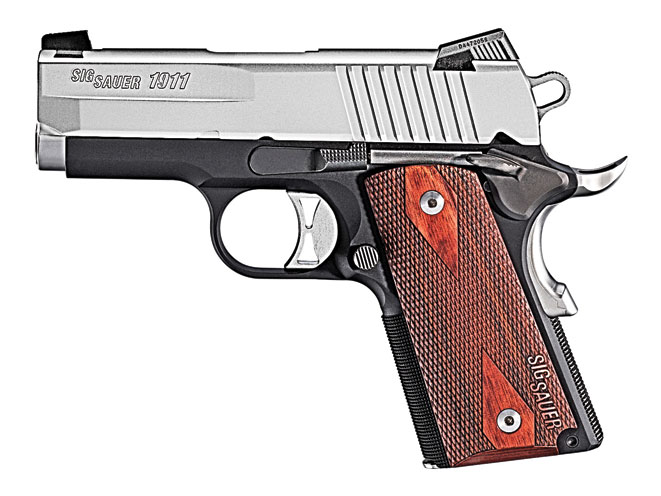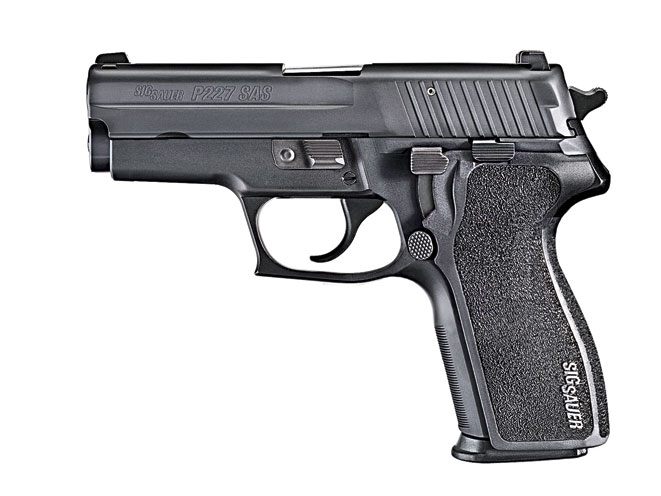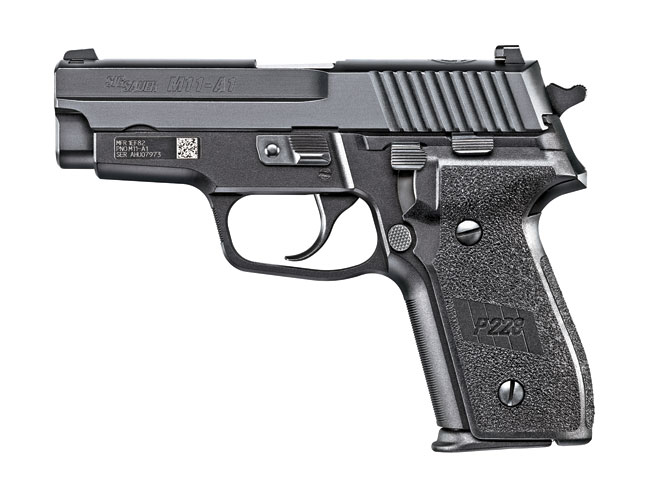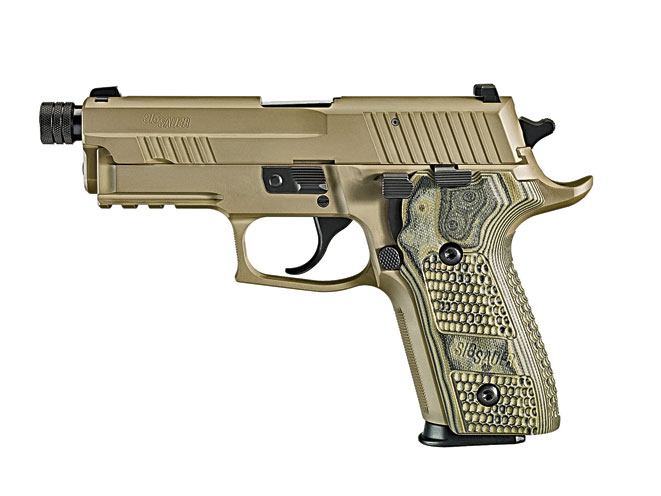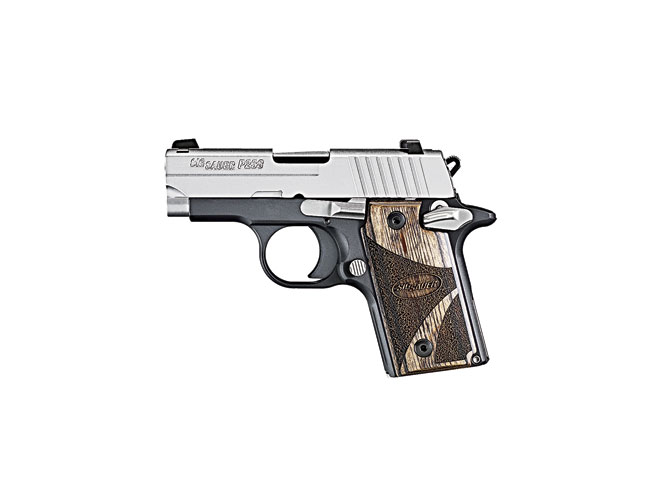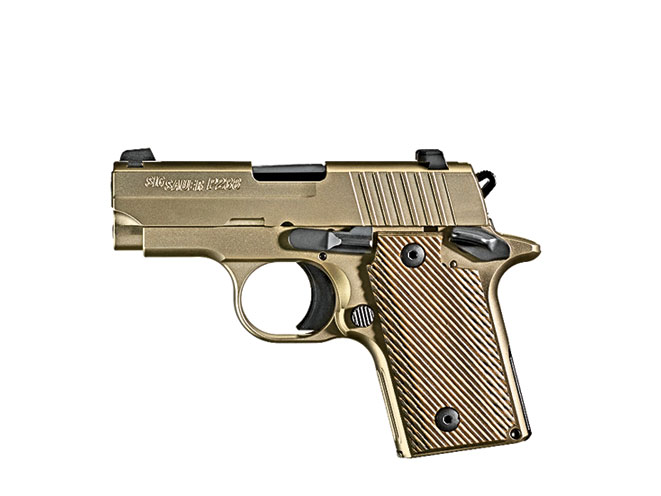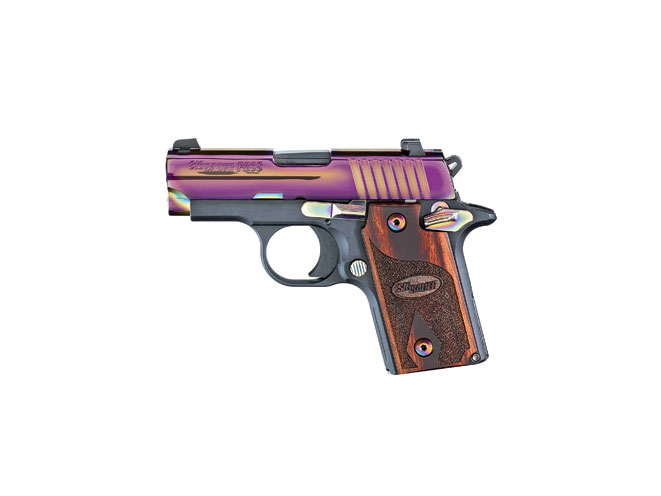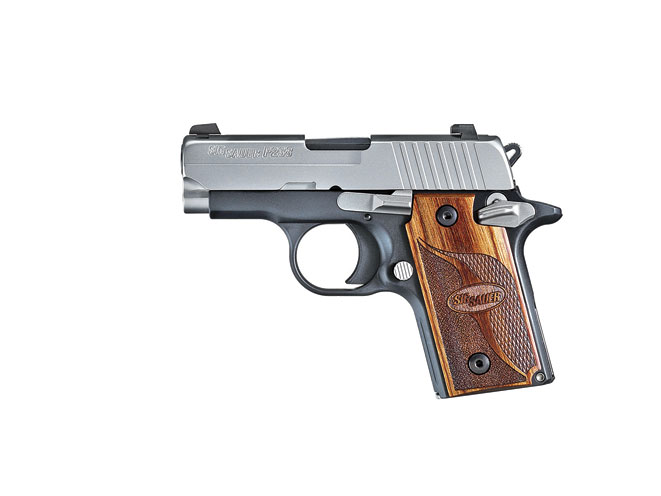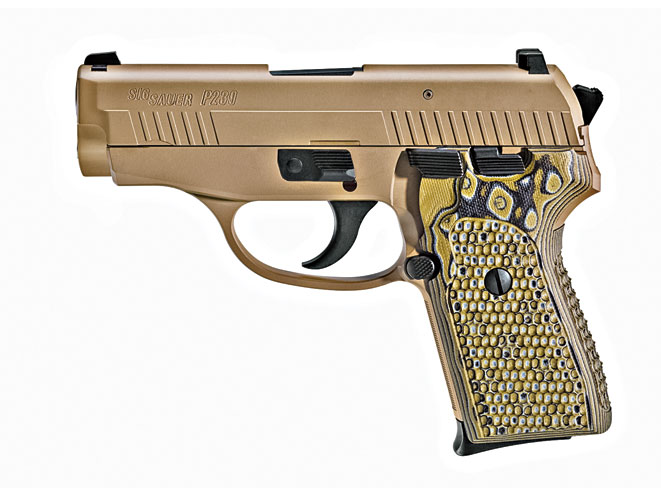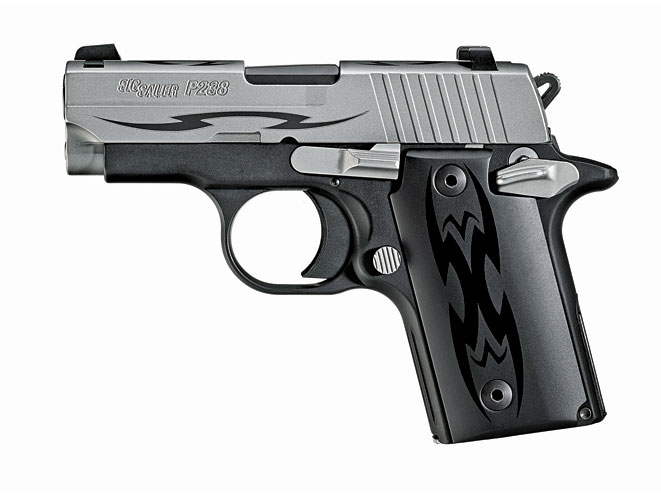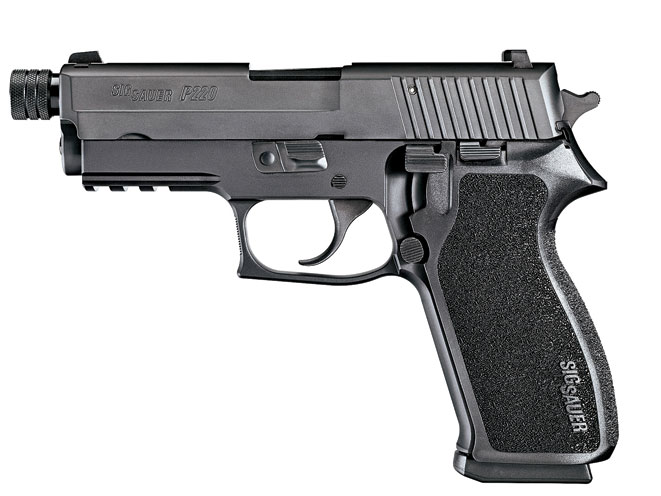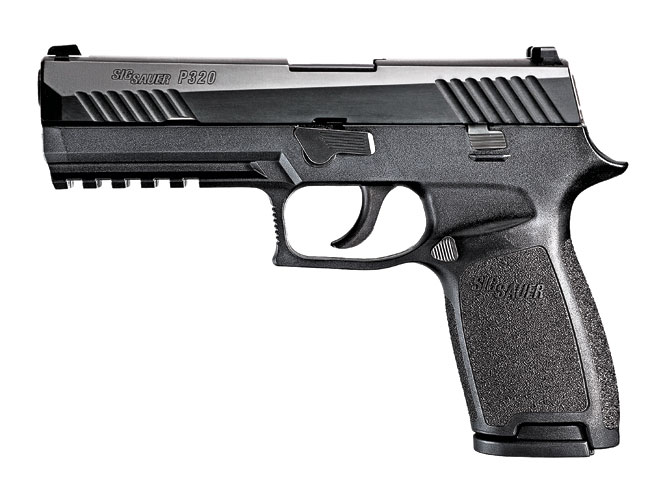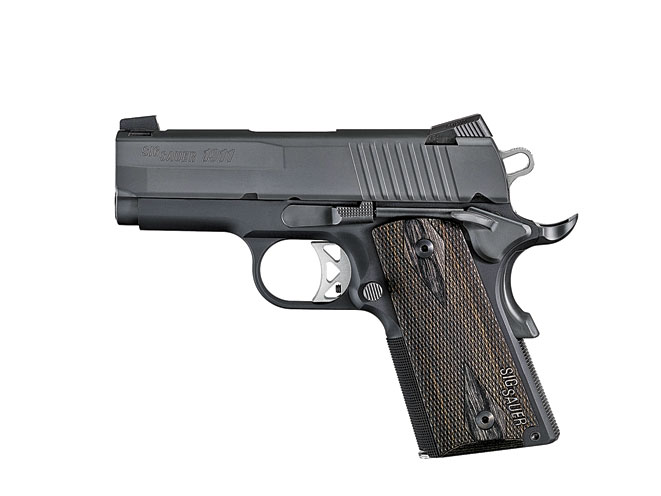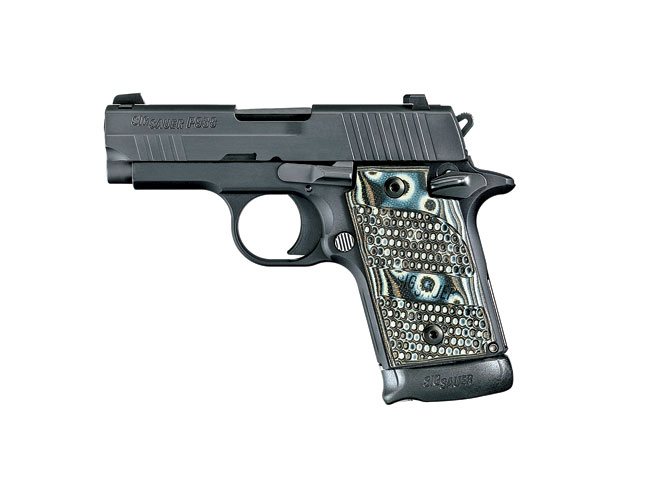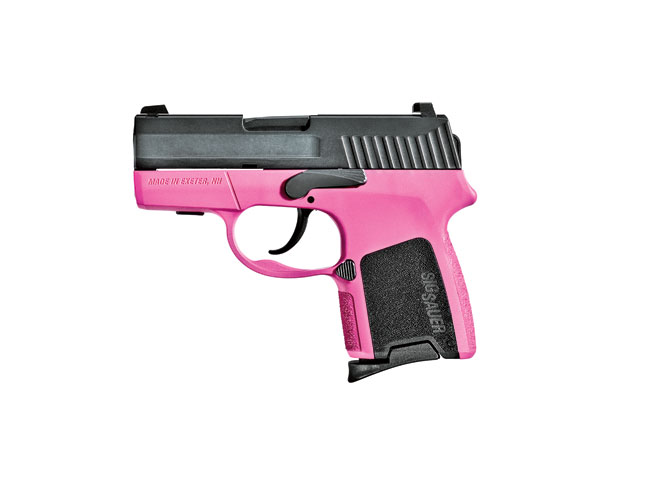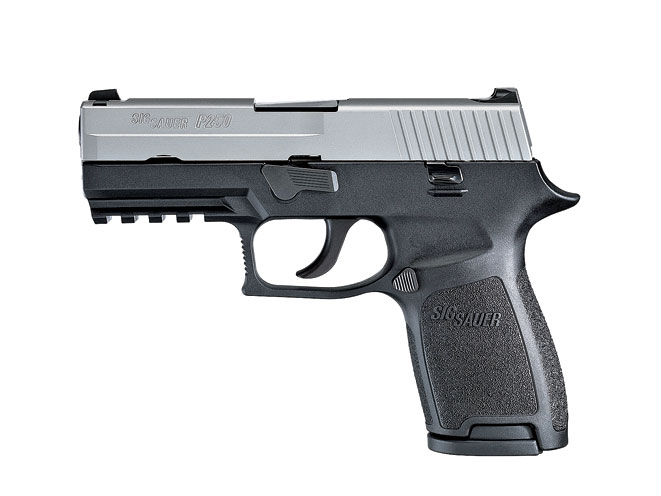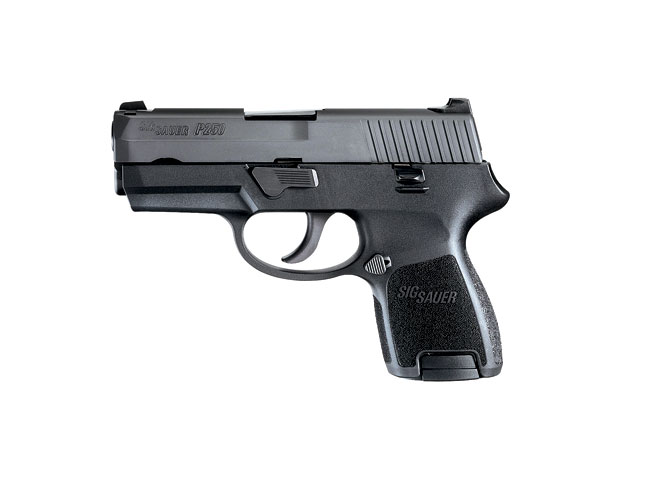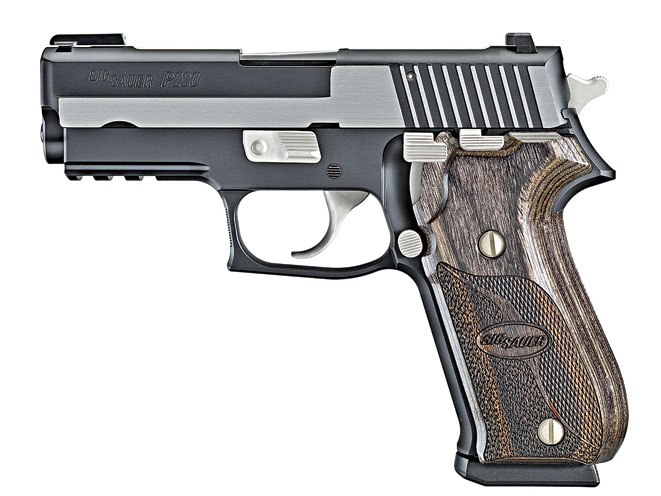For concealed carry pistols, Sig Sauer unquestionably offers the broadest line of any manufacturer. Pistols are made in six different calibers that differ mechanically and in size and are not just shortened versions of the same design.
Defensive handguns carry a personal, multi-faceted decision. involving considerations that go beyond the scope of this article. However, the caliber, the action type, the trigger type, and the size and fit of the handgun are threshold choices. Sights and grips are less important because they can be inexpensively changed to suit your preferences.
Advertisement — Continue Reading Below
Sig Sauer pistols come: .22 LR, .380 ACP, 9mm, .40, .357 Sig and .45 ACP. Yes, the more powerful ones offer a better chance of stopping an adversary, assuming correct shot placement. The guiding rule, however, is to use the most powerful caliber you can shoot accurately if magazine capacity between calibers is not a factor. My advice is to start with a manageable caliber to build your skill and then upgrade to a more powerful caliber.
Sig Sauer does not make revolvers, but the company’s pistols have several types of triggers: double-action (DA) with de-cocker, double-action-only (DAO), double-action Kellerman (DAK), single-action (SA), and striker-fired DAO. Each trigger type is distinctive and you will undoubtedly prefer one design. Some DA triggers are the Short Reset Trigger (SRT) type, which are slightly dimensionally different than standard triggers but also have a short reset that can enhance the speed of follow-up shots. For some police who are required to have a longer trigger pull that is the same for each shot, the DAK trigger is much smoother and lighter (6.5-7.5 pounds) than most DAO triggers.
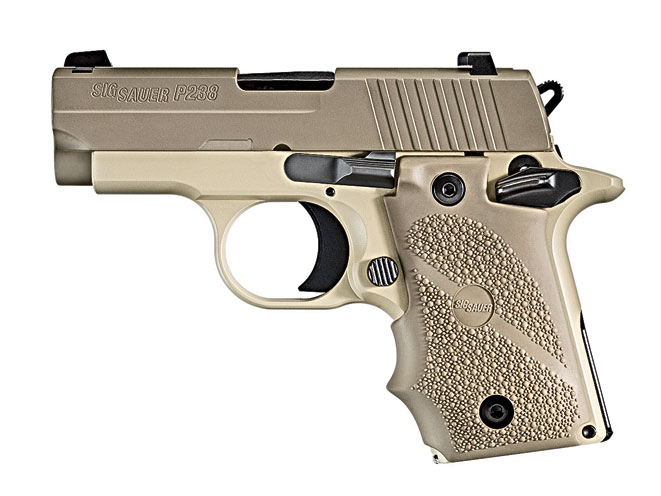
Sig Sauer pistols are ergonomic and some models have ambidextrous controls. Even with a right-handed design, however, left-handed shooters can easily operate the slide release and decocking lever. Finding the best fitting grip on your Sig Sauer is a function of the frame shape, trigger reach/size and grip. Sig Sauer pistols do not have interchangeable backstraps that adjust fit, but users can select among different frame styles (standard, E2, Elite, etc.) and trigger (short or standard) to get the best fit. They can also have a different trigger installed at the Sig Sauer Custom Shop. Aftermarket grips can help optimize fit.
Advertisement — Continue Reading Below
For those who are attuned to the aesthetics of their pistol, Sig Sauer pistols have finishes and grips that appeal to a broad audience, especially the P238 variants. Finally, several models carry the designation “SAS,” meaning Sig Anti-Snag. Such pistols are specifically designed for concealment and comfort when carried in holsters like the inside-the-waistband style where the pistol can ride against the body. They lack accessory rails, have additional machining on the frame and slide to further round the edges and have a rounded (or at least less angular) triggerguard. SAS pistols are DA with decocker and have the SRT.
Defensive pistols fit into four basic categories depending on size: full, compact, subcompact and micro. Though all sizes can be carried concealed given the proper clothing and holster, I’ll address most of the compact through micro models.
P320 & P250
Advertisement — Continue Reading Below
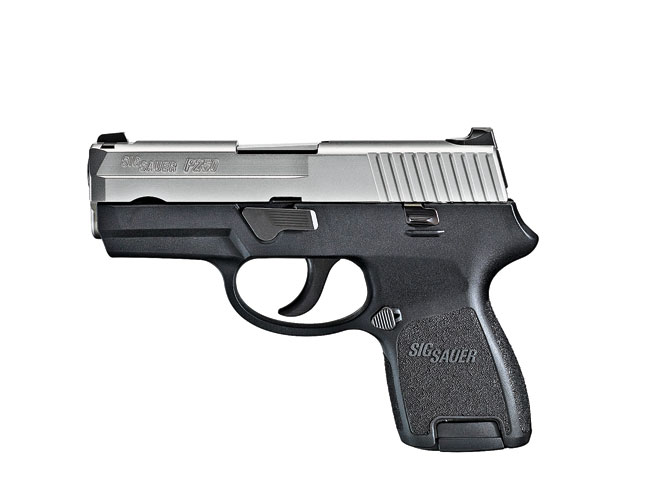
The P250 and P320 are probably the most flexible pistols made anywhere. The P320 is Sig Sauer’s new striker-fired design while the P250 is DAO. Both are modular, allowing the shooter to easily change between different sized polymer grip modules and calibers. There’s no need to buy an additional gun when changing from a full-size .40 to a compact or subcompact because the stainless steel fire control group is the serialized unit and can be switched between different size grip modules. Calibers are 9mm, .40, .357 Sig and .45 ACP. The P250 Subcompact also comes in .380 ACP. Capacity of the Compact version ranges from 9+1 to 15+1, and from 6+1 to 12+1 for the P250 Subcompact. On the P250, two trigger lengths are offered to help fit different size hands, while the P320 gives the user the choice of a drop-safe trigger with or without a spring-loaded trigger tab. The P250 Compact is 7.2 inches long, 5.1 inches high and 1.3 inches wide, and it weighs 26.9 ounces. The P250 Subcompact is 6.7 inches long, 4.7 inches high and 24.9 ounces.
P229 & M11-A1
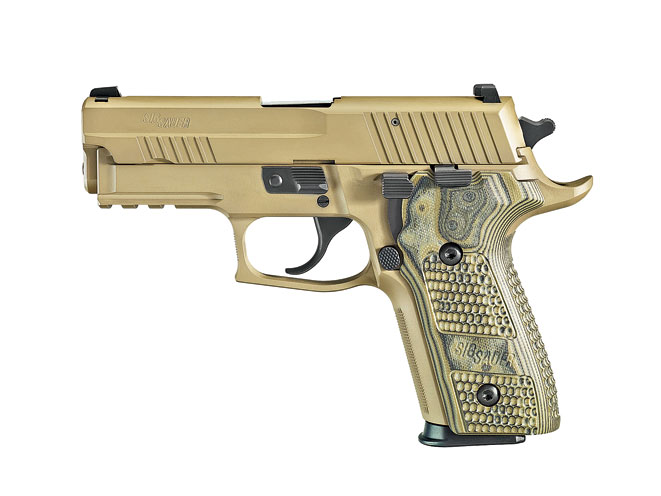
One of the most popular Sig Sauer compact is the P229, which comes in 9mm, .40 and .357 Sig with a capacity of 12+1 to 15+1. A .22 LR model is also offered. Eleven models of the P229 are produced, including three frames made in either aluminum or stainless steel.
Advertisement — Continue Reading Below
The 9mm M11-A1 is very similar in size and trigger to the P229 SAS, but it has three 15-round magazines instead of two and corrosion-resistant internal parts. The M11-A1 comes in three variants including one with a desert tan PVD finish and a threaded-barrel version.
P239
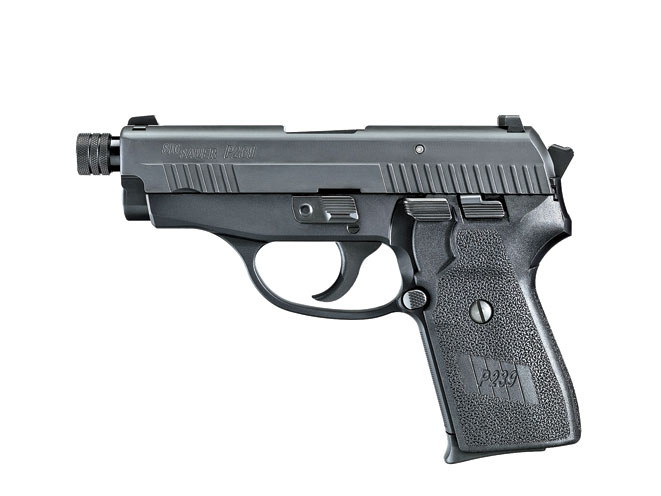
Designed to fit the off-duty and backup gun niche, the P239 has the narrow profile of a single-stack design with smooth edges and a partially bobbed hammer for easier concealment. It is also slightly smaller than other Sig compacts at 6.6 inches long, 5.1 inches high and 1.2 inches wide. There are several versions including the tan PVD finish Scorpion, Tactical with threaded barrel, and an SAS. Three trigger options are offered and magazine capacity is eight for 9mm and seven for .40 and .357 Sig.
Advertisement — Continue Reading Below
P220 Carry/Compact & P227 Carry Nitron
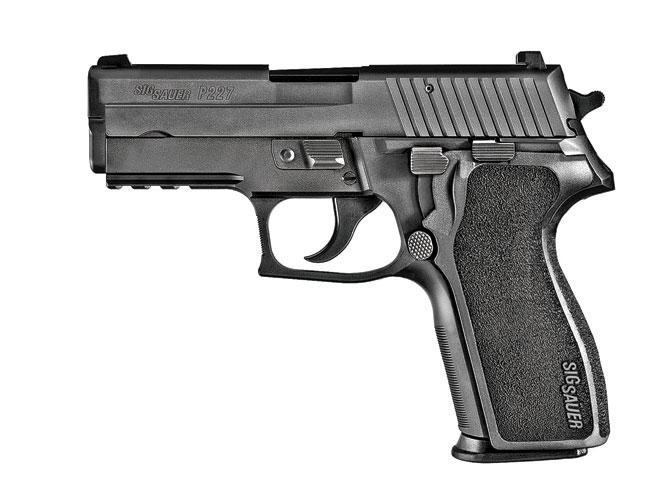
For those who prefer a .45 ACP, there are six carry models and two compact models in the P220 Series. All P220 Series pistols use a single-stack magazine that makes them 1.5 inches wide. Carry and Compact models are the same length at 7.1 inches (7.6 inches for the Carry Elite with beavertail frame), but the Carry version is 5.5 inches high and has an eight-round magazine. The Compact is 5 inches high with a six-round mag.
The Compact models afford a full finger grip, with the P220R Compact having a 1913-style rail on the dust cover. The P220 Compact SAS Gen 2 has the “Sig Anti-Snag” treatment of slide, frame and the SRT trigger.
Advertisement — Continue Reading Below
The six P220 Carry models run the gamut from the two-tone Carry Equinox to the Carry Elite, which features a frame with a beavertail backstrap that is comfortable and affords excellent control. New to the line is a P220 Carry SAO with a five-pound SA trigger.
Two recent additions to Sig Sauer’s .45 ACP line-up are the P227 Carry Nitron and P227 SAS Gen 2. These have the same height (5.5 inches), length (7.1 inches) and width as most P220 Carry pistols but offer 10+1 capacity because of a new frame. Fourteen-round extended magazines are available.
Subcompact Performance
Advertisement — Continue Reading Below
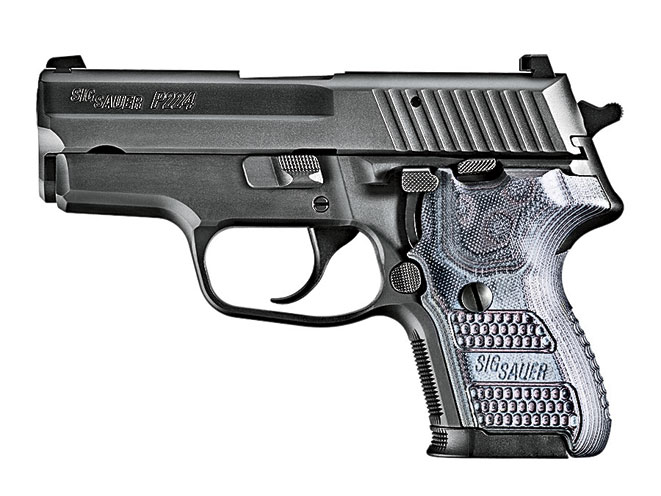
As the name implies, subcompact pistols are trimmed and shortened versions of compact pistols. Because most subcompacts share the same controls of the parent gun and accept the parent gun’s magazines, they are ideal backup guns. Subcompacts, however, often require a three-finger rather than full-hand grip due to their shorter height.
The P224 is based on the P290 and comes in the same calibers (9mm, .40, .357 Sig) and is made with DAK or DA with de-cocker trigger. It is 6.7 inches long and 1.4 inches wide. At only 4.5 inches high, the P224 has one of the largest magazine capacities (10 rounds of .40 or .357 Sig, or 12 rounds of 9mm) available for its height. The P224 comes in five variants including an SAS and Equinox.
For those who want a compact 1911 in .45 ACP there’s the 1911 Ultra. The Ultra has an aluminum frame, is 4.8 inches high, 6.8 inches long and 1.4 inches wide. In practice, it is more compact than the length implies because about 0.5 inches of its length is from the protruding beavertail grip safety. It has 7+1 capacity and is SA with standard 1911-style controls. A Two-Tone model with stainless steel slide is also offered.
Advertisement — Continue Reading Below
Micro Defense
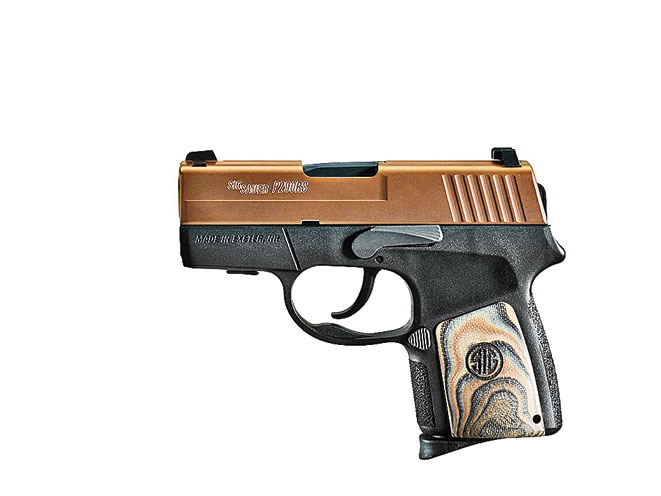
Sig Sauer’s micro-sized pistols include the P238, P938 and P290RS. All are small enough to fit into the palm of the average man’s hand at under 6 inches in length and 4 inches in height. They are also narrow, being no wider than 1.1 inches at the widest point, making them highly adaptable to different styles of clothing and holsters.
RELATED: Gun Review – Deep Cover Sig P290RS
The P238 and P938 are the smallest and lightest Sig Sauer pistols made, with the P238 weighing less than 1 pound (15.2 ounces) in its aluminum-frame version and 20.1 ounces for the stainless frame. Both are SA with a drop-safe design that allows them to be carried “cocked and locked” (i.e., hammer cocked with the safety on) in a proper holster. The P238 is chambered in .380 ACP. The slightly larger P938 is a 9mm or .22 LR. The .380 ACP and 9mm pistols have six-round flush-fit or seven-round extended magazines; the .22 LR model holds 10 in flush-fit. The flush-fit mag allows only a three-finger grip, but the extended version has an extension piece that gives most shooters a full-hand grip for better control. The P238 is made in 18 versions, including one with a laser while the P938 has 10.
The Sig Sauer P290RS comes in .380 ACP and 9mm, yet both models share the same slide and polymer frame dimensions, which may appeal to a
husband and wife team that like this pistol’s design but have different tolerances for recoil. The P290RS is a DAO with a long but very smooth trigger pull of 9 pounds. It’s trigger travel and weight obviate the need for a manual safety lever just like a DA revolver. Moreover, it’s rounded edges and hammer, which are shrouded by the slide, make it snag free and comfortable to carry even in IWB holsters. Capacity is 6+1 in 9mm and 7+1 for the .380Auto. Add a round to each if you use the extended magazine. The P290RS is 5.5 inches long, 3.9 inches high, 0.9 inches wide and is offered in six variants including one with a laser.
For more information, visit SigSauer.com or call 866-345-6744.
